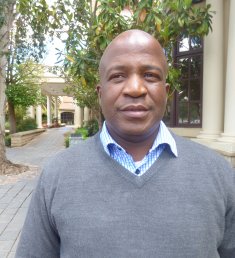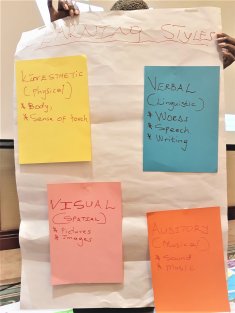The action research journey of George Lithuge, Subject Advisor Sesotho
Classrooms that don’t engage their learners, remain empty. How do you catch everyone’s attention? George Lithuge, Subject Advisor Sesotho, encourages his teachers to address four different learning styles in their lesson plans. ‘Some pupils wish to learn in motion, others want to see pictures. None of them should be left behind.'
George Lithuge is Subject Advisor in the Fezile Dabi district of the Free State province. He is responsible for Sesotho (one of the 11 official languages in South Africa) in Grade 4 to Grade 7. He participated in the second VVOB action research (AR) cohort in the Free State Province. His AR question was ‘How can we include all different learning styles in lesson plans?’

‘We identify four types of learning: kinaesthetic, verbal, auditory and visual’, George embarks. During his action research trajectory, he encouraged his teachers to implement all four learning styles in their lesson plans. ‘We must let go of the current “one size fits all” strategy and structure our lesson plans in such a way that we allow the gifted learners as well as the slow learners to excel in what they have been exposed to.’
‘What about the policy?’
Curriculum was an important concern. ‘Many teachers were under the impression that this approach required different lesson plans for one topic’, George explains. ‘What about the policy?’ they asked. ‘We have so much content to cover.’
George’s biggest challenge was to investigate the current lessons. ‘Action research asks for evidence. But when you interrogate teachers, you enter their comfort zone’, he explains. ‘They were reserved and protective. “When are you covering all the learning styles? Can I see your lesson plan?” Asking this, I got some resistance. I had to develop different ways to check in on my teachers.’
Print-rich classes

I look forward to continuing to capacitate my co-researchers with additional resources.’ Providing them with print-rich classes for instance, where visualisations connect learners’ realities to the lesson topics. 'When a teacher can point at a picture or a model in the classroom, saying “This is what I am talking about”, visual learners will understand a topic much better.’
‘My teachers are now aware that different learning styles can play an important role in engaging each and every learner. That is a step in the right direction’, says George. ‘We are not there yet, but action research helps to pursue the goals of inclusive education in a more informed and structured manner.’




